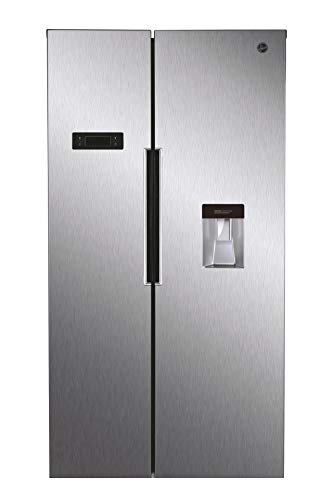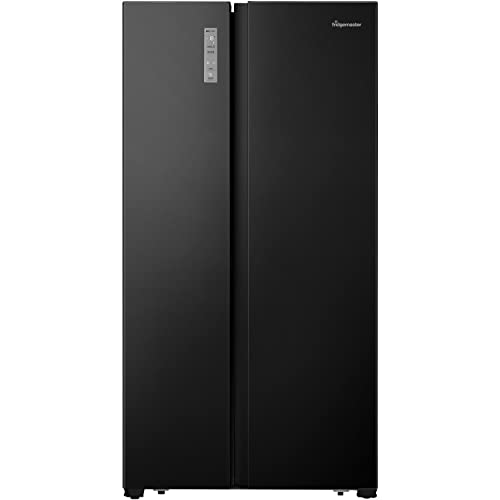This company has no active jobs
0 Review
Rate This Company ( No reviews yet )
Company Information
- Total Jobs 0 Jobs
- Category HBFC Officers Cooperative Housing Society Ltd Lahore
- Location Sakardu
About Us
How Fridges And Freezers Has Changed My Life The Better
Understanding Fridges and Freezers: The Essential Kitchen Appliances
Refrigerators and freezers are two of the most vital appliances in contemporary cooking areas. These home appliances serve a crucial role in food conservation and waste reduction by guaranteeing that perishable products remain fresh and safe for consumption. This post explores the different kinds of fridges and freezers, their performances, and crucial considerations for selection and upkeep.
Types of Refrigerators
The marketplace provides a variety of refrigerator types, each developed to satisfy different customer requirements. Below is a list of the most common kinds of fridges:

-
Top-Freezer Refrigerators
- Most common type.
- Freezer compartment is located above the refrigerator section.
- Usually more cost effective and energy-efficient.
-
Bottom-Freezer Refrigerators
- Freezer is situated at the bottom.
- Allows much easier access to fresh products at eye level.
- Often includes pull-out drawers for much better company.
-
Side-by-Side Refrigerators
- Refrigerator and freezer sections are nearby.
- Ideal for narrow kitchens and allows simple access to both compartments.
- Typically features water and ice dispensers.
-
French Door Refrigerators
- Integrates a bottom freezer with double doors at the top.
- Deals adequate storage and elegant styles.
- Often includes features like temperature-controlled drawers.
-
Compact Refrigerators
- Smaller size perfect for limited areas.
- Frequently utilized in dormitory, studio apartments, or as secondary fridges.
Table 1: Comparison of Refrigerator Types
| Type | Advantages | Disadvantages | Normal Size |
|---|---|---|---|
| Top-Freezer | Affordable, energy-efficient | Less convenient access to the freezer | 14-30 cu. ft. |
| Bottom-Freezer | Much easier access to fresh food | Freezer can be harder to arrange | 19-30 cu. ft. |
| Side-by-Side | Easy gain access to, water/ice dispenser | Narrow vs. storage area | 22-30 cu. ft. |
| best French style fridge freezer uk Door | Stylish, roomy, organized | More expensive | 20-30+ cu. ft. |
| Compact | Space-saving, portable | Minimal storage | 1.7-5.5 cu. ft. |
Types of Freezers
Freezers are an equally important appliance for food preservation. They are available in various styles designed to fit various household needs. Consider the following types:
-
Upright Freezers
- Run like a standard refrigerator with vertical storage.
- Simpler to arrange with racks and compartments.
-
Chest Freezers
- Large, horizontal design normally providing more storage area.
- Maintains temperatures better during power blackouts.
- More energy-efficient than upright designs.
-
Portable Freezers
- Compact units ideal for outside activities or little areas.
- Often used for camping journeys or as temporary storage.
Table 2: Comparison of Freezer Types
| Type | Benefits | Downsides | Normal Size |
|---|---|---|---|
| Upright Freezer | Much easier to arrange | Less energy-efficient, more floor area | 5-20 cu. ft. |
| Chest Freezer | Holds more items, energy-efficient | Harder to arrange | 5-25 cu. ft. |
| Portable Freezer | Compact and versatile | Restricted storage capability | 1-10 cu. ft. |
Key Features to Consider
When selecting a fridge or freezer, customers ought to remember numerous functions that can boost performance:
- Energy Efficiency: Look for models with the ENERGY STAR certification to conserve on electricity costs.
- Storage Capacity: Evaluate storage requirements based upon household size and eating routines.
- Temperature level Control: Some devices provide digital controls for accurate temperature settings.
- Adjustable Shelving: Customizable shelving enables optimum organization.
- Water and Ice Dispenser: Offers convenience however can use up important area inside.
- Noise Level: Sound scores can influence convenience, specifically in open-concept homes.
Advantages and disadvantages of Having a Fridge and Freezer
While fridges and freezers are vital technologies, they also have particular benefits and downsides:
| Pros | Cons |
|---|---|
| Maintain food life expectancy and lower waste | Need regular maintenance |
| Allow bulk buying and meal prepping | Can be pricey to purchase and run |
| Offer convenience and fast access to food | Inhabit significant cooking area area |
Upkeep Tips
To ensure durability and ideal efficiency of fridges and freezers, think about the following maintenance ideas:
- Regular Cleaning: Clean the interior and exterior occasionally to prevent buildup of dirt and germs.
- Inspect Seals: Inspect door seals regularly for leakages to maintain efficiency.
- Temperature level Settings: Keep the fridge at 34-38 ° F and the freezer at 0 ° F for ideal food conservation.
- Thaw as Needed: Chest freezers should be defrosted routinely to preserve effectiveness.
- Clear Air Vents: Ensure that airflow isn’t obstructed to improve energy effectiveness.
FAQs About Fridges and Freezers
Q1: How long can food be kept in a freezer?A: Most foods can be kept in a freezer for a number of months. Meats and poultry frequently last 4-12 months, while vegetables can last approximately 8-12 months.

Q2: How frequently must I clean my fridge and freezer?A: It is suggested to clean your fridge and freezer every 3 to 6 months, or as needed when spills occur. Q3: Can I put hot food straight in the fridge?A: It is suggested to cool hot food to room temperature level before placing it in the fridge to avoid
raising the temperature level inside the appliance. Q4: Why is my fridge running constantly?A: This could be due to a malfunctioning thermostat, stopped up coils, or door seals that aren’t working effectively. Fridges and freezers are important
properties to contemporary households, supplying important services for food storage and conservation.
Comprehending the different types, features, and upkeep requirements can help consumers select the ideal appliances for their needs and maximize their functionality. Accepting energy-efficient designs not just supports sustainable practices but also adds to considerable savings on utility bills, making notified choices more vital than ever.
